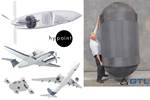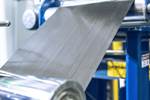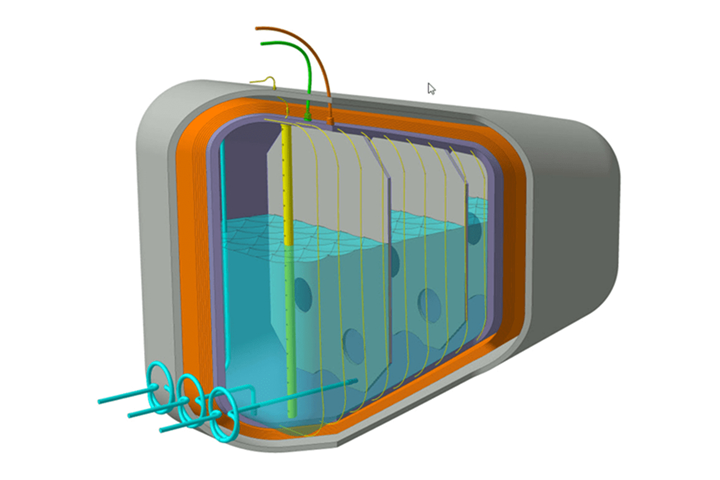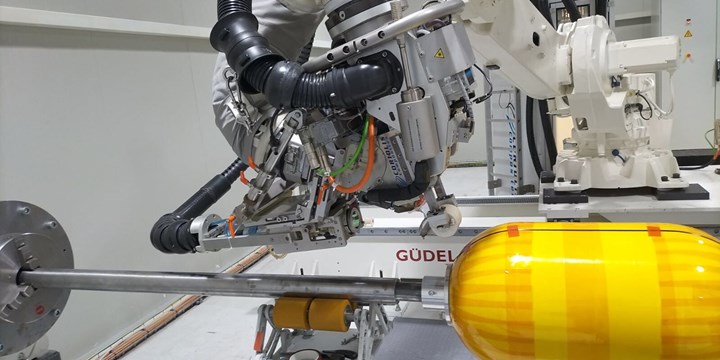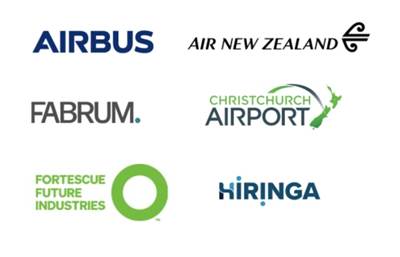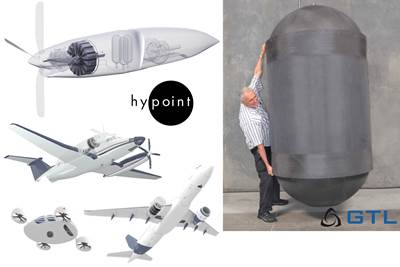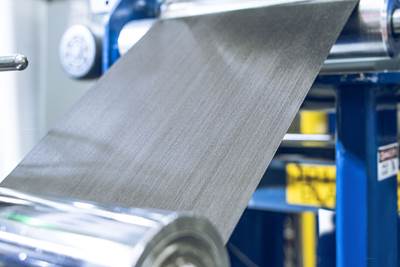Collins Aerospace to lead COCOLIH2T project
Project for thermoplastic composite liquid hydrogen tanks aims for two demonstrators and TRL 4 by 2025.
Share
Read Next
Collins Aerospace will lead the COCOLIH2T consortium for the Clean Hydrogen Partnership topic: “Development of specific aviation cryogenic storage system with a gauging, fuel metering, heat management and monitoring system,” Photo Credit: Collins Aerospace
Collins Aerospace (Charlotte, N.C., U.S.), through its subsidiaries in Europe, has been selected to lead the COCOLIH2T (Composite Conformal Liquid H2 Tank) project by the European Commission’s Clean Hydrogen Partnership, a public-private partnership supporting research and innovation activities in hydrogen (H2) technologies in Europe.
The Collins-led consortium will bring together Collins sites across France, Italy, the U.K., Poland, the Netherlands, Ireland and the U.S., to work with project partners NLR, Delft University of Technology, ATR, Novotech and Unified International. This consortium will work to develop new thermoplastic composites technology for liquid hydrogen (LH2) tanks to power H2 propulsion architectures in future more sustainable aircraft.
Collins reports that while LH2 contains approximately three times as much energy per kilogram as traditional jet fuel, it has a lower specific density — LH2 requires nearly four times as much volume to match the energy content of the same mass of traditional jet fuel. Thermoplastic composite tank structures are in development to provide a strong, yet lightweight tank design to help overcome this challenge to using green H2 as a zero-emission aviation fuel.
Novotech has significant expertise in thermoplastic composites for aircraft. Photo Credit: Novotech Aerospace Advanced Technology
Multi-material, conformal tank for structural integration
As described on the Clean Hydrogen Partnership page for COCOLIH2T, the three-year (Jan 2023-Jan 2026), €8.7 million project is proposing “a disruptive concept focused on reducing the impact of the tank’s weight and volume within an aircraft, while ensuring system safety. COCOLIH2T will not only develop a safe composite and vacuum insulated LH2 tank for the aviation sector but has the ambition to go beyond by designing and manufacturing a conformal tank through novel fabrication technologies enabling a reduction of more than 60% in production energy consumption and at least 50% in production time leading to significantly lower manufacturing costs. Additionally, the proposed structure of the tank, based on a multi-material thermoplastic composite concept, is intended to facilitate aircraft structural integration to support overall system weight reduction compared with conventional tank configurations. The key challenge that COCOLIH2T will tackle is the generation of a feasible and affordable design of a conformal variable section box-shape tank while minimizing the boil-off leakages wherever possible. COCOLIH2T’s overall system will be demonstrated at TRL4 by 2025.”
Conformable composite tanks for compressed gas hydrogen (CGH2) at 700 bar are being developed by TU Munich and other partners (see “TU Munich develops cuboidal conformable tanks using carbon fiber composites …”).
The COCOLIH2T consortium was awarded this project based on its response to the call for proposals issued by the Clean Hydrogen Partnership in 2022, specifically “Development of specific aviation cryogenic storage system with a gauging, fuel metering, heat management and monitoring system,” TOPIC ID: HORIZON-JTI-CLEANH2-2022-03-07. COCOLIH2T is funded by the European Union under Grant Agreement 101101404.
As explained on the above-linked European Commission project page, expected outcomes for this topic include that two functional demonstrators capable of storing between 50 and 150 kilograms of LH2 will be built. The demonstrators will be used to validate the operation of such a storage system including design and integration of components needed for safe function including filling, structural health monitoring (SHM), overpressure, thermal management, boil-off, sloshing and vaporizing depending on a system safety analysis.
The topic page goes on to describe how today’s LH2 tanks in aerospace “are mostly made of metal. For space applications this solution is still valid, because of power available, non-reuse and costs. But having in mind commercial aviation, the focus should be on enhancing the reliability of the metal tank and piping performance while designing a LH2 storage system made of light, carbon fiber-reinforced materials. Using these components, a significantly improved gravimetric index for the whole storage system can be achieved. The drawback of using these materials is that the laminate quality or laminate architecture are of particular importance for permeability [movement of small H2 molecules through the laminate]. Different test specimens, different semi-finished products made of glass and carbon, fibers with polymer or metal matrix, different additives, liners and architectures as well as protective coatings have to be considered. In addition, a selection of adhesives has to be made for use in cryogenic environments.”
In addition, cites the topic requirements, “the pressure and temperature of the LH2 should be monitored to validate feed and fuel gauging functions under flight accelerations. The analysis of dynamic loads as a result of fuel sloshing should be addressed numerically and experimentally, as well as the pressure development in the tank due to the interaction of the sloshing hydrogen and the thermodynamic environment in the tank. The design solution should address the changing pressure by either active or passive means (e.g., active pressurization control or passive anti-sloshing devices), to ensure safe operation of the engine feed systems.”
The gained experiences on the two storage demonstrators will be used in phase 2 projects (2026-2030) to obtain and define the certification regulation of commercial aviation LH2 storage systems. In these follow-on projects, larger tanks must be developed to become flightworthy. COCOLIH2T project results are expected to contribute to the following objectives of the Clean Hydrogen Partnership:
- Tank gravimetric efficiency [%weight]: 16% in 2024 and 35% in 2030
- LH2 tank capacity: 50-150 kilograms LH2
- Dormancy: > 24 hours
- Venting rate: < 2%/day
- Filling rate: 300-500 kilograms/hour
- Boil-off : < 2%/day after dormancy
- Maximum diameter: < 1 meter
- Minimum operating pressure: 1 bar (pump fed) – 3 bar (pressure fed)
- Maximum operating pressure: 3 bar (pump fed) – 8 bar (pressure fed)
- Insulation Vacuum: 1*10^-5 mbar
As reported by revolution.aero news, Collins Aerospace reported in late 2022 that it was taking part in Collins estimates that the funding it receives from Clean Aviation combined with its own R&D will reach €85 million ($88.3 million).
“The COCOLIH2T project addresses the challenges of shifting from traditional jet fuel to a fully sustainable, clean burning H2 fuel,” Mary Lombardo, vice president, Advanced Technologies at Collins Aerospace, says. “Compared with traditional fuel tanks, H2 tanks must reduce weight and enable containment of cryogenic fluid. COCOLIH2T is the kind of aerospace industry cross-collaboration Collins is focused on to reduce the environmental impact of aviation and lead us to a sustainable future.”
Collins describes thermoplastic composites as advanced materials known for their durability and unique manufacturing characteristics (see more at CW’s thermoplastic composites page). Collins notes these materials are lightweight, suitable for extreme temperatures and have the capacity to be recycled.
Collins Aerospace, a Raytheon Technologies Corp. business, is a leader in technologically advanced and intelligent solutions for the global aerospace and defense industry.
Related Content
Infinite Composites: Type V tanks for space, hydrogen, automotive and more
After a decade of proving its linerless, weight-saving composite tanks with NASA and more than 30 aerospace companies, this CryoSphere pioneer is scaling for growth in commercial space and sustainable transportation on Earth.
Read MorePlant tour: Spirit AeroSystems, Belfast, Northern Ireland, U.K.
Purpose-built facility employs resin transfer infusion (RTI) and assembly technology to manufacture today’s composite A220 wings, and prepares for future new programs and production ramp-ups.
Read MoreManufacturing the MFFD thermoplastic composite fuselage
Demonstrator’s upper, lower shells and assembly prove materials and new processes for lighter, cheaper and more sustainable high-rate future aircraft.
Read MoreCryo-compressed hydrogen, the best solution for storage and refueling stations?
Cryomotive’s CRYOGAS solution claims the highest storage density, lowest refueling cost and widest operating range without H2 losses while using one-fifth the carbon fiber required in compressed gas tanks.
Read MoreRead Next
Fabrum supplies lightweight composite LH2 tanks for aviation, launches consortium with Airbus, other partners
New Zealand company works with FSE, GKN Aerospace to test LH2 storage and delivery system, advances zero emissions flight via Hydrogen Consortium and $23 million Series A funding.
Read MoreHyPoint partners with GTL to extend zero-emission flight with ultralight liquid hydrogen tanks
NASA award-winning fuel cell pioneer works with carbon fiber tank maker GTL to offer up to 10 times more capacity versus existing hydrogen storage tanks.
Read MoreDemonstrating composite LH2 tanks for commercial aircraft
Toray Advanced Composites and NLR discuss the Netherlands consortium and its 4-year project to build demonstrator liquid hydrogen tanks, focusing on thermoset and thermoplastic composites.
Read More


